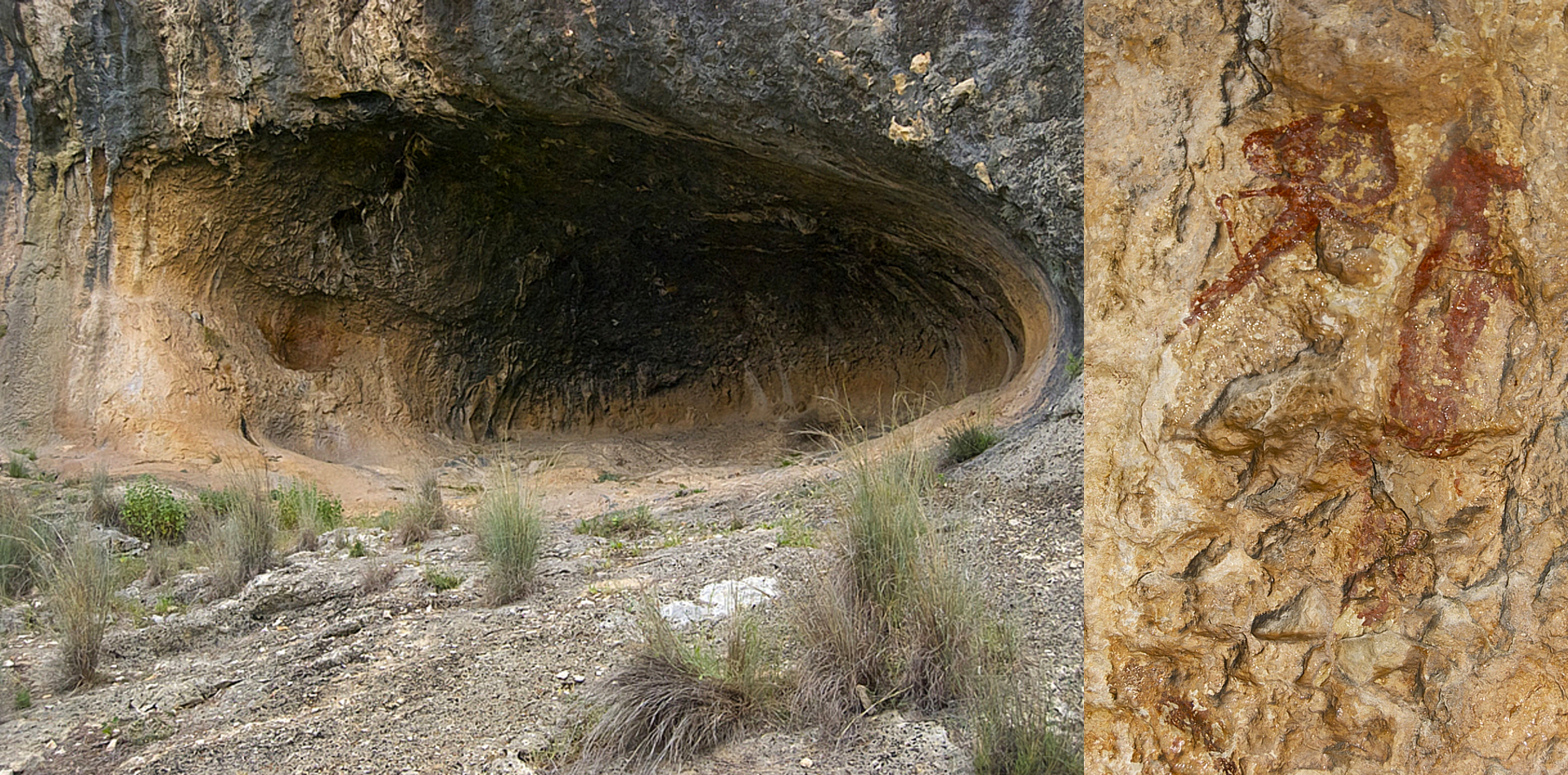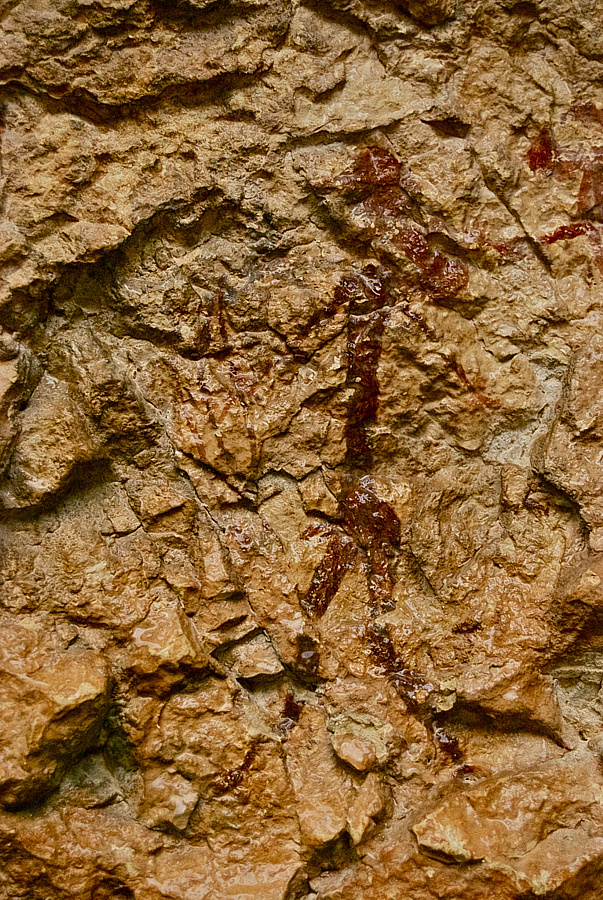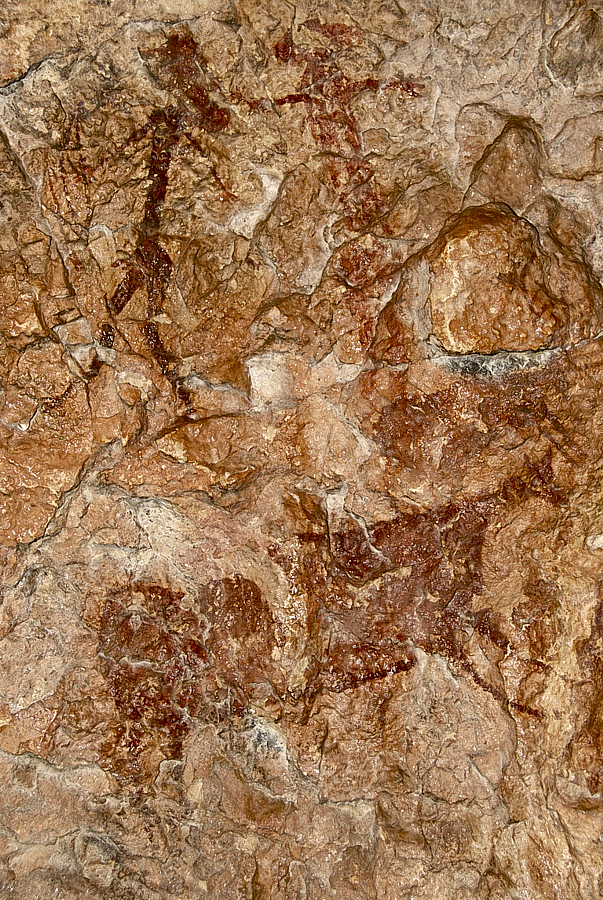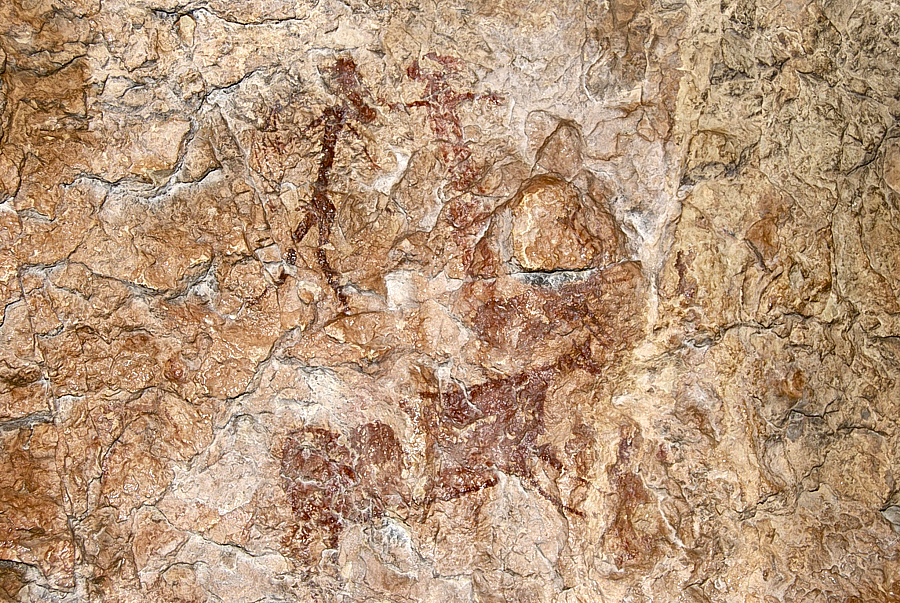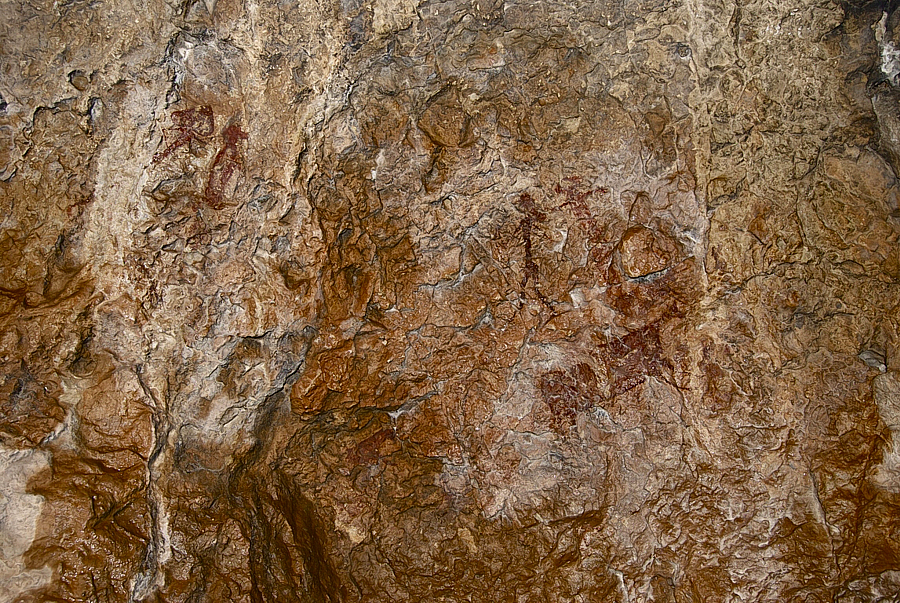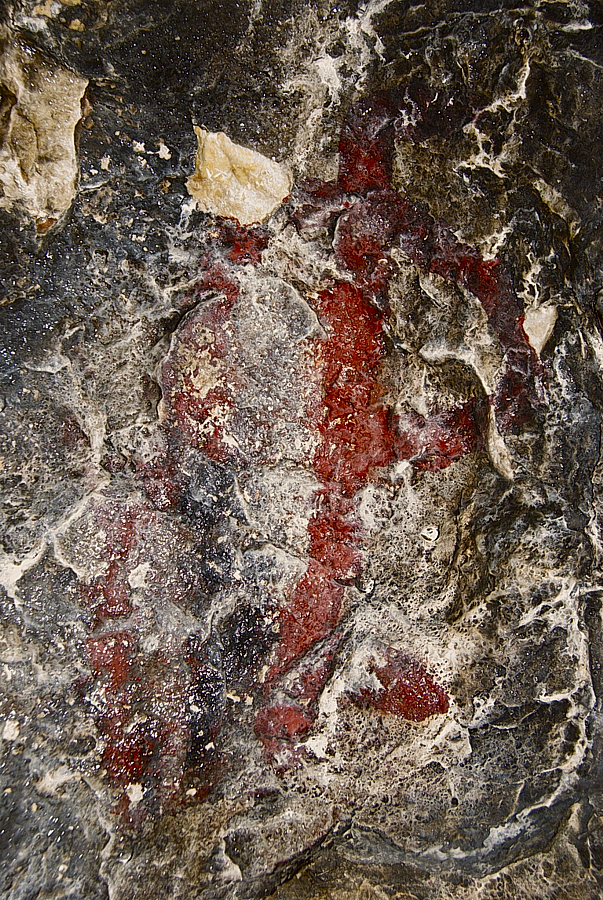Age of the artistic representations: Neolithic.
General description of the destination: Rock-Shelter I is 9m long, 4m high and 6m deep. The paintings are found across the whole wall, in the different Levantine and Schematic styles. Levantine paintings: These naturalistic paintings are a manifestation of Post-Palaelithic society. In Rock-Shelter I they are found on the left of the shelter, in a small hollow, where human and animal figures can be observed. The antropomorphs are on the left, particularly a man with a large triangular hat or hairstyle, facing the centre of the hollow. One arm is on a companion figure, which is smaller and less well-conserved, with a hat or hairstyle with two protuberances. Opposite this couple, another two figures seem to be approaching the same central part of the hollow. The first is an archer, with a bow and arrow in one hand, whose fingers and toes can clearly be seen. Behind this hunter is a human figure with an oval head and outstreched arms. This figure, possibly a woman, is wearing a full-length tunic. The animals in this area rise towards the far right. A stag with large antlers is at the top, with a possible female deer behind it. Two smaller anmals complete the representations in this part of the shelter. Schematic paintings: These are also found in small hollows in the wall of the shelter and consist of human figures, animals, symbols and geometric motifs. In this case, the human and animal figures are limited to their most basic parts, and are almost abstract. The signs are finger-marks, lines and other marks, while the schematic anthropomorphs are of three types. An anchor-shaped figure is at the end of the shelter, formed by a vertical line with a curved line at the top. Another type is formed by semi-oval shapes at both ends of a central axis.
History of the site: As well as El Milano Rock-Shelter, the Region of Murcia has other sites where Levantine and Schematic art can be seen, such as Cantos de la Visera (Yecla), Cueva del Peliciego (Jumilla), Grajos Rock-Shelter and Cueva-Sima de la Serreta (Cieza), Cañaíca del Calar and Risca Rock-Shelter (Moratalla) and Mojao Rock-Shelter (Lorca). Together with a total of over 700 rock-art sites in Mediterranean Spain, El Milano Rock-Shelter was listed as a UNESCO World Hertage site, within the Rock Art of the Mediterranean Basin.
Museographic resources description: The City of Mula Museum will show you everything necessary to know the culture, art and traditions of the city. One of his permanent exhibitions ” The Legacy of Mula in the History “. In it, the visitor realizes a tour from the Prehistory up to the recent History of the city. The pieces that can be seen come only from deposits of Mula.

